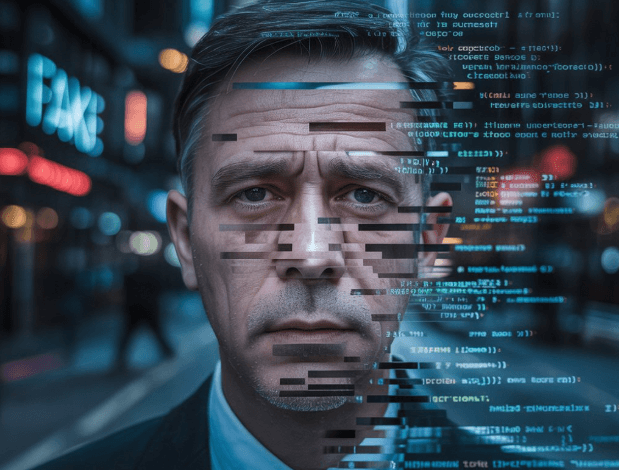Malicious Deepfakes: When AI Becomes a Weapon of Deception

Artificial Intelligence’s ascent has ushered in a host of remarkable innovations—spanning smart assistants, automated translations, and self-driving cars. Yet, as with any potent instrument, AI carries a darker underside as well. Among the most troubling trends of the past few years is the proliferation of malicious deepfakes—extremely convincing digital content that is entirely fabricated using deep-learning algorithms.
Although deepfakes may be entertaining or inventive when used for satire or cinematic works, malicious deepfakes are purposefully created to deceive, manipulate, and inflict harm. Such manipulated videos, images, and audio files carry grave consequences for politics, cybersecurity, privacy, and the public’s confidence in the media. As they grow ever more lifelike and widely available, the imperative for effective deepfake detection and countermeasures has never been greater.
What Are Malicious Deepfakes?
A subset of artificial intelligence known as deep learning is employed to craft deepfakes, which learn data patterns—such as facial features, vocal timbre, or speech cadence—and use them to produce synthetic media. A deepfake is regarded as malicious when it’s produced with the purpose of deceiving, defaming, manipulating, or impersonating someone.
In contrast to parody or entertainment-driven works, malicious deepfakes are typically deployed to:
Sow misinformation or promote fake news
Defame personal or professional reputations
Carry out fraudulent or identity-theft schemes
Erode confidence in institutions, elections, and the media.
Evade security systems.
For example, deepfake technology could be employed to alter a public figure’s speech and make it appear that inflammatory comments were uttered, or a synthetic audio clip could be fabricated to spoof a CEO and set a fraudulent financial transaction in motion.
The Real-World Effects of Malicious Deepfakes
Though the notion of forged videos might seem like an idea straight from a science-fiction tale, malicious deepfakes are already interfering with real lives and institutions. Among the most noteworthy cases are:
Political manipulation: Deepfakes have been leveraged to forge videos in which politicians appear to confess to crimes or endorse controversial positions.
In corporate settings, synthetic audio has on occasion been employed to masquerade as executive voices, duping employees into routing substantial sums of money.
Social harm: Deepfake pornography—especially when it features non-consenting individuals—has increasingly come under scrutiny, with women being the primary targets.
They’re no mere harmless pranks; they constitute assaults on truth, trust, and privacy. As malicious deepfakes proliferate, we are moving into an age in which the old adage “seeing is believing” cannot be taken for granted.
The perils of Malicious Deepfakes
The peril malicious deepfakes pose resides in their believability. In contrast to conventional misinformation, which typically leans on crude image editing or text alterations, deepfakes can generate exceptionally convincing, apparently authentic content that experts often find hard to tell apart from reality.
Among the principal dangers malicious deepfakes present are:
Disinformation on a grand scale: Deepfakes, once circulated on social media, can deceive thousands—or even millions—before their deception is uncovered.
Erosion of trust in legitimate media: As deepfakes proliferate, the public may come to question even authentic footage, undermining faith in journalism and in the very concept of truth.
Legal and ethical issues: Those who fall victim to deepfake impersonation often struggle to demonstrate that the footage is counterfeit, and they frequently find themselves without legal avenues in many jurisdictions.
Security breaches: Within fraudulent schemes, deepfakes endanger even the most advanced authentication measures.
The Importance of Deepfake Detection
As the peril of malicious deepfakes intensifies, the necessity for deepfake detection tools has grown ever more pressing. Such technologies seek to scrutinize digital media and determine whether it has been altered with AI.
Deepfake detection solutions utilize a range of approaches, among them:
Facial movement analysis: Identifying unnatural facial expressions, inconsistent blinking, or irregular lip-sync.
Image artifact analysis: detecting the “digital fingerprints” or distortions produced by generative models.
Audio forensics: Investigating voice patterns, background noise, and spectral inconsistencies within fake audio clips.
Metadata analysis: Scanning file information and timestamp data to detect any signs of tampering.
Such technologies are being woven into content-moderation systems, forensic analysis platforms, and even newsrooms to assist in separating authentic content from synthetic fakes.
Obstacles to detecting Deepfakes
Even as deepfake-detection technology steadily advances, the resulting cat-and-mouse struggle endures. As detection methodologies advance, the methods for producing increasingly sophisticated fakes likewise advance. The cat-and-mouse competition between creators and detectors remains in constant motion.
Principal challenges include:
The accelerating advancement of deepfake tools: Open-source, user-friendly AI models now make the production of convincing deepfakes simpler than ever.
The absence of standardized detection methods: Each platform may employ its own tools, and no universal framework exists for labeling material or confirming its authenticity.
Hominid vulnerability: Despite sophisticated tools, individuals are inclined to trust their own eyes—particularly when what they perceive reinforces their existing biases.
Taken together, these challenges underscore the need for a layered strategy that interweaves technology, public awareness, and regulation.
Looking Ahead: Defending the Truth.
Countering malicious deepfakes goes beyond technical measures; it’s fundamentally a societal concern. Although deepfake detection tools are indispensable, they must be underpinned by wider initiatives—among them:
Public education: Ensuring that individuals recognise what deepfakes are and can detect suspicious content.
Policy and regulation: Governments should craft legislation that targets the generation and transmission of harmful synthetic media.
Ethical AI development: Researchers and developers should anticipate the malicious use of their tools and embed safeguards within their technologies.
Platform accountability: Social media and content platforms are obliged to monitor their networks for manipulated media and implement measures to address it.
Conclusion
Malevolent deepfakes extend beyond a mere parlor trick; they represent a grave threat to truth, security, and trust in today’s digital landscape. With synthetic media growing ever more convincing, the significance of deepfake detection—and the strength of the tools used to detect it can only intensify.
Though technology holds promise in countering these dangers, safeguarding the truth will still require concerted action from technologists, governments, educators, and individuals in an age where fiction can look indistinguishable from fact. Whether deepfakes will increase in frequency is not the issue; the critical question is how well prepared we are to confront them when they do.



